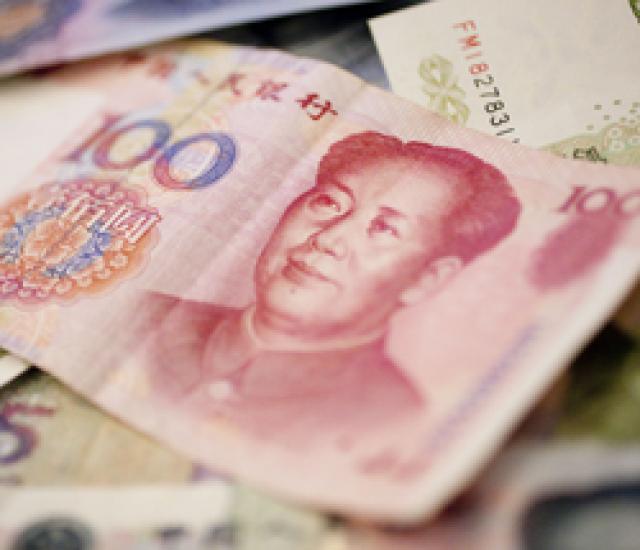Experienced Chinese equity investors like Victoria Mio know that the country’s market is driven by government policies. That is why the Hong Kong–based fund manager makes two pilgrimages a year to Beijing to better understand what’s on the minds of senior policymakers.
[Click here to access the complete rankings of the 2011 All-China Research Team and read the profiles of the region's Top Analysts].
After meeting with regulators in April, Mio — who manages the $693 million Robeco Chinese Equities fund — concluded that China will continue to enjoy strong real gross domestic product growth and rising incomes, despite being challenged by inflation. “The Chinese authorities remain confident about both the current strength of the economy and the outlook for 2011,” says Mio. “Their policy stance stays broadly stable but with a continued tightening bias.”
That relative stability is drawing institutional investors from around the world at a time when many markets are wildly erratic. However, few money managers are able to travel to Beijing each year to meet with the country’s political elite. Instead, they rely on published research from skilled analysts, and the firm whose analysts do the best job of covering Chinese equities is BofA Merrill Lynch Global Research, according to participants in Institutional Investor’s second annual All-China Research Team survey. BofA leaps from fourth place after picking up four positions, for a total of 12, and tripling its number of analysts considered the best in their respective sectors, to three.
The U.S.-based bank’s strong upward momentum is overshadowed by the even greater advance of China International Capital Corp., which rockets eight places to share the No. 2 spot with Citi, unchanged from last year; the two firms capture nine positions each. Fourth place is also shared by two firms: Deutsche Bank, which rises one notch, and Morgan Stanley, which climbs two; they claim eight positions each.
Profiles of the top-ranked analyst in each of the survey’s 14 industry sectors and three macro disciplines can be found on the pages that follow; profiles of the analysts ranked second and third, along with a wealth of deeper data, can be found on our web site, institutionalinvestor.com. Results are based on responses from more than 1,670 money managers and buy-side analysts at some 660 institutions that oversee an estimated $782 billion in Chinese equities.
Although BofA declines to disclose the number of analysts it has covering Chinese equities or the number of companies they follow, the bank’s head of greater China research and the No. 1 analyst in Energy, Thomas Wong, notes that the firm has altered its approach to research in light of China’s emergence as a dominant player on the world economic stage.
“China is no longer a stand-alone story, and its importance to the global economy cannot be overstated,” says Wong, who is based in Hong Kong. “It accounts for a quarter of global growth, which means that your outlook for China is a pillar of your worldview — and vice versa. We as a firm have aligned our greater China research team with our Americas- and Europe-based global analysts to reflect this and to ensure a more relevant context to our research.”
BofA also emphasizes greater cross-sector and cross-asset-class collaboration among its analysts. “Macroeconomic, strategy and sector-oriented research are all about developing coherent investment theses that integrate both top-down and bottom-up views,” he adds.
Case in point: David Cui, who climbs one rung to capture the top spot in Portfolio Strategy, published a report in January detailing “Seven Market-Driven Themes for 2011.” Among the issues the Hong Kong–based analyst discusses are such macro concerns as financial reforms, fiscal spending and sustainability of investment growth, global quantitative easing and the currency war, and inflation.
“Inflation is clearly front and center in investors’ minds right now, and how long it remains there will come down to how effectively the government can contain inflation expectations,” the BofA strategist told clients. “To position for inflation and tightening, we recommend investors play defense — that is, overweight sectors with more predicable earnings streams.” Cui also urged clients to underweight interest-rate-sensitive sectors such as real estate, which by the end of April had fallen behind the broad market by 2.7 percentage points.
CICC analysts also place their Chinese equity coverage in a global context, according to Beijing-based Jin Qiu, co-head (with Haizhou Huang) of research. “CICC research has been committed to providing domestic and overseas clients with the most forward-looking investment analysis, derived from rigorous, independent, professional research on a global platform,” says Qiu. The firm employs 39 publishing analysts, two more than last year, and they cover 172 stocks, up from 151.
Citi has also been widening its China focus. The firm added three analysts over the past 12 months, bringing its total to 32, and increased the number of companies they cover from 212 to 247. “Since the breakout of the global financial crisis, stocks have been moving in lockstep to a degree unseen in the past,” says China equity strategist Minggao Shen, who works out of Hong Kong. “As a result, clients start to focus more on macro trends and policy outlooks while keeping an eye on corporate fundamentals. Macro-themed research is particularly important in timing the market and allocating assets among sectors.”
Take wage inflation, for example. “After doing some international comparisons, we realized that wage inflation is largely driven by the rising demand for leisure once GDP per capita exceeds $3,000 to $4,000,” Shen says. “If true, wage inflation in China is unlikely to be a one-year or two-year event; rather, it’s a medium-term theme.” China’s nominal GDP per capita was $4,382 in 2010, according to the International Monetary Fund.
The Asian Development Bank predicts that inflation in China will accelerate to a four-year high of 4.6 percent, on average, this year, up from 3.3 percent last year. Despite signs of overheating, China’s economy is one of the drivers of global growth, according to the Manila, Philippines–based lender, which forecasts the nation’s output will expand by 9.6 percent in 2011 (down from a sizzling 10.3 percent in 2010) and ease back to 9.2 percent in 2012. Such growth rates are the admiration of the economies of the entire industrial world, which collectively are forecast to grow only 2.1 percent this year and next, the development bank believes.
If those predictions prove correct, investor interest in China isn’t likely to dissipate anytime soon. Jiangqiao (Michael) Tong, Deutsche Bank’s Hong Kong–based head of research for Hong Kong and China, says his clients are talking about much longer time horizons.
“We have seen investors become more interested in new investment themes for China over the next five to ten years,” Tong notes, citing education, energy and health care as among the sectors generating the most enthusiasm. The firm has 14 analysts who track 49 stocks — roughly the same numbers as last year at this time — but expansion is under way. “Looking forward to the rest of this year, our planned coverage for China stocks will increase by a significant amount,” he adds.
China may see even greater investor interest going forward, if the forecast of Deutsche Bank’s Jun Ma, No. 1 in Economics for a second year running and No. 3 in Portfolio Strategy, are on target.
“Structural changes are taking place in the right direction and will over time enhance the roles of consumption, services and high-end manufacturing in the economy,” says Ma, who is headquartered in Hong Kong. “This is partly driven by policies but, much more importantly, the ongoing structural changes are now driven by market forces. For example, the decline in the labor force — especially the younger-age labor force — due to demographic changes is leading to stronger wage inflation than before, and thus will naturally imply faster consumption growth going forward. This will happen regardless of government policies.”
Rising wages will force change in the manufacturing sector, Ma says, with high-end segments such as equipment production getting a major boost thanks to rising demand for automation. In March, Ma dubbed Hong Kong–based resort operator Shangri-La Asia and two outfits headquartered in Shenzhen, Guangdong — Ping An Insurance (Group) Co. of China and telecommunications-equipment manufacturer ZTE Corp. — “our favored names in the services and high-end-manufacturing sectors” for the remainder of this year. By the end of April, Shangri-La’s shares had advanced 7 percent and Ping An’s had risen 4.4 percent, but ZTE’s had taken a tumble, falling 24.1 percent. During the same period the broad market gained 6.4 percent.
Ma, who was bearish on Chinese equities from the autumn of 2009 through March of this year, is decidedly bullish — and he’s far from alone.
“After a volatile first quarter, we are turning more optimistic on the Chinese markets while guarding against significant volatility induced by domestic tightening and international uncertainties,” says Mio of Robeco. “We think that the macroeconomic backdrop is supportive, earnings revisions are encouraging, and the overall valuation is attractive.”
Investors that share her optimism — and there are many the world over — don’t have to trek to Beijing to gain insight into which Chinese companies hold the most promise. They can rely on the guidance of analysts inducted onto the 2011 All-China Research Team.






